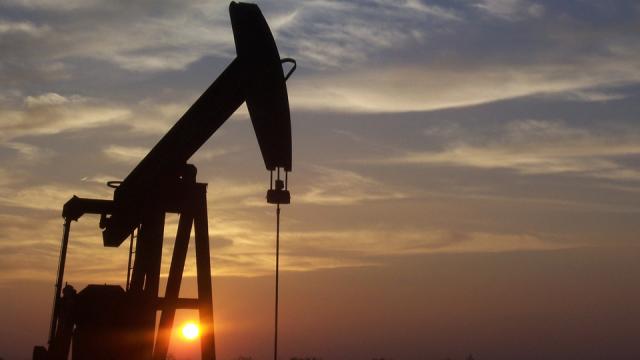When it comes to planet-warming gases we need to worry about, carbon dioxide is at the top of the list. But the runner-up in the climate hall of infamy — methane — is turning out to be a bigger problem than we realised. A study published in Nature today estimates that global methane emissions from the oil and gas industries could be as much as 60 per cent higher than previously reported.
Image: Pixabay
Methane, an odourless and colourless gas that packs 84 times the global warming punch of CO2 over the short-term, has received a surge of attention in recent years for its outsized contribution to global warming. The problem of industrial methane emissions became publicly visible last October, when a natural gas storage well ruptured outside of a Los Angeles community and managed to spew nearly 100,000 metric tonnes of methane skyward. The Aliso Canyon gas leak was a major environmental disaster, but it was also symbolic lightning rod for scientists and environmentalists, who are concerned that the oil and gas industries are racking up a much bigger methane bill than they’re letting on.
“Aliso Canyon by itself is large, but what it points to is a national challenge that has a significant climate impact,” Mark Brownstein, a methane policy expert for the Environmental Defence Fund, told Gizmodo earlier this year.
The trouble in accounting for industrial methane emissions — which can occur during extraction, transportation, processing and storage of natural gas, or when oil companies deliberately torch the stuff — is that they’re extremely variable and our data is patchy. That’s why a NOAA-led team of researchers has taken a new approach to estimating global methane pollution, by building a carbon-isotope database that separates emissions based on their source.
Methane produced biologically (in wetlands, agriculture and landfills) turns out to have a very different carbon-13 isotopic signature than methane derived from fossil fuels, allowing the two sources to be teased apart. “We wanted to compile a database of all available [methane isotopic] measurements in the literature, and we were able to increase the number of data points by a factor of 100,” lead study author Stefan Schwietzke told Gizmodo in an email. “The advantage of our method is that it captures almost all emissions that have been released to the atmosphere.”
Having compiled all the data they could find, Schwietzke and his colleagues arrived at a startling conclusion: Methane emissions from the fossil fuel industry appear to be 20 to 60 per cent higher than scientists previously thought.
That’s a big discrepancy. As Schwietzke notes, these unaccounted-for emissions fall within the range of total human-caused methane production in the United States, or total methane emissions from all global forest and savannah fires and cookstoves. Put another way, we’re talking an amount of methane “300 times greater than the major Aliso Canyon event in California last year”.
Steven Hamburg, chief scientist at the Environmental Defence Fund, told Gizmodo that he would take any hard numbers from the new study with a grain of salt. “There’s a really rapidly growing literature in this space, and there’s a lot of conflict in that literature,” he said. “This is an ongoing piece of the conversation that will take a little while to fully resolve.”
But, Hamburg added, he’s not at all surprised by Schwietzke’s new ballpark estimate, calling it “completely consistent with what we’ve seen”, through recent efforts to collect more data on industrial methane pollution. “This reaffirms the fact that there’s a large opportunity to reduce emissions from the oil and gas sector and have a positive impact on climate,” he said.
Just this past autumn, the EPA finalised the very first US national standards aimed at combating methane pollution from the fossil fuel industry. Unfortunately, the standards only apply to new oil and gas production facilities, allowing leaks and emissions from ageing infrastructure to continue unchecked. Moreover, as Schwietzke’s new analysis highlights, this problem extends far beyond the borders of a single nation.
“Clearly, we need to deal with this around the globe,” Hamburg said.
[Nature]
